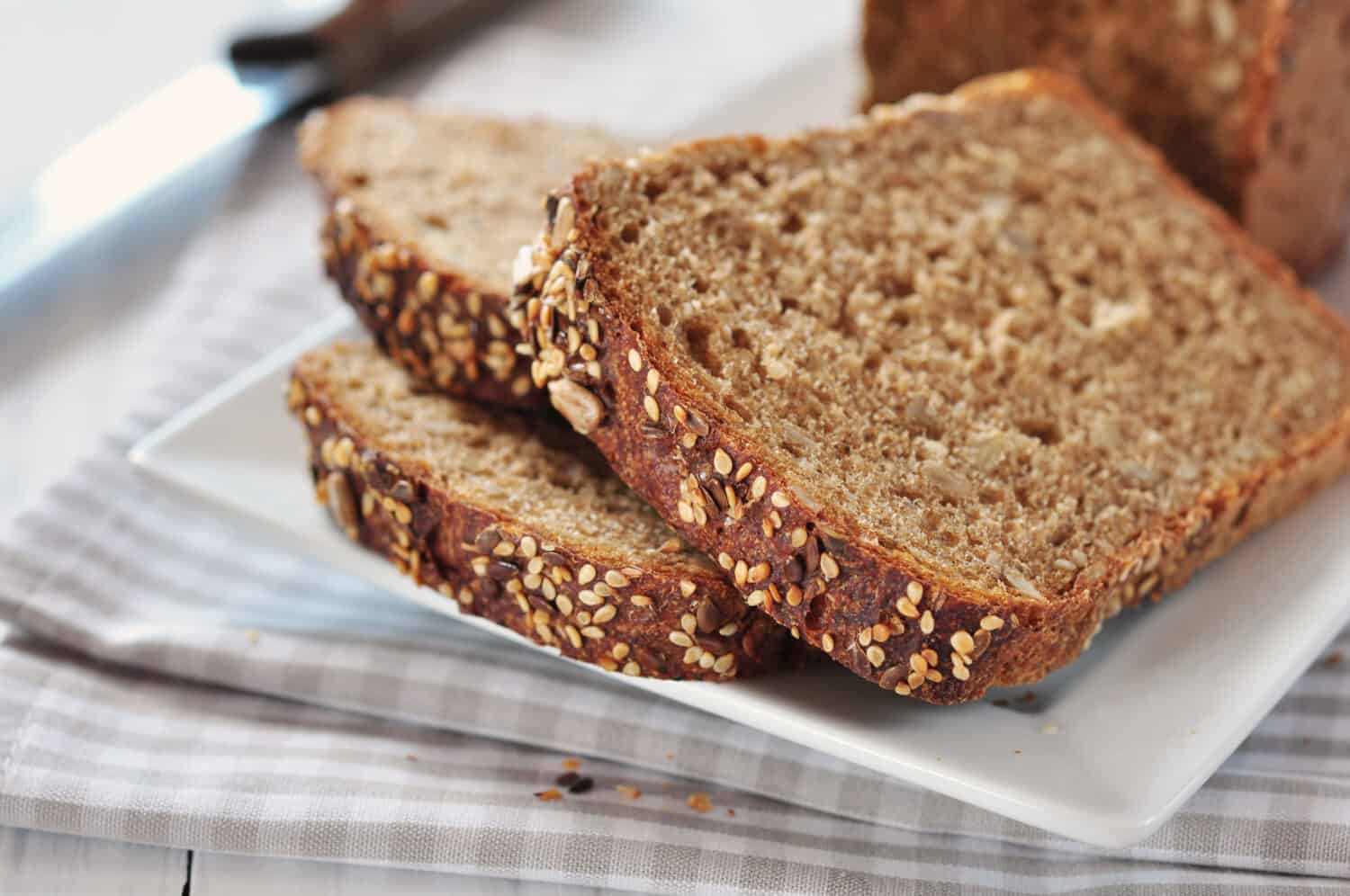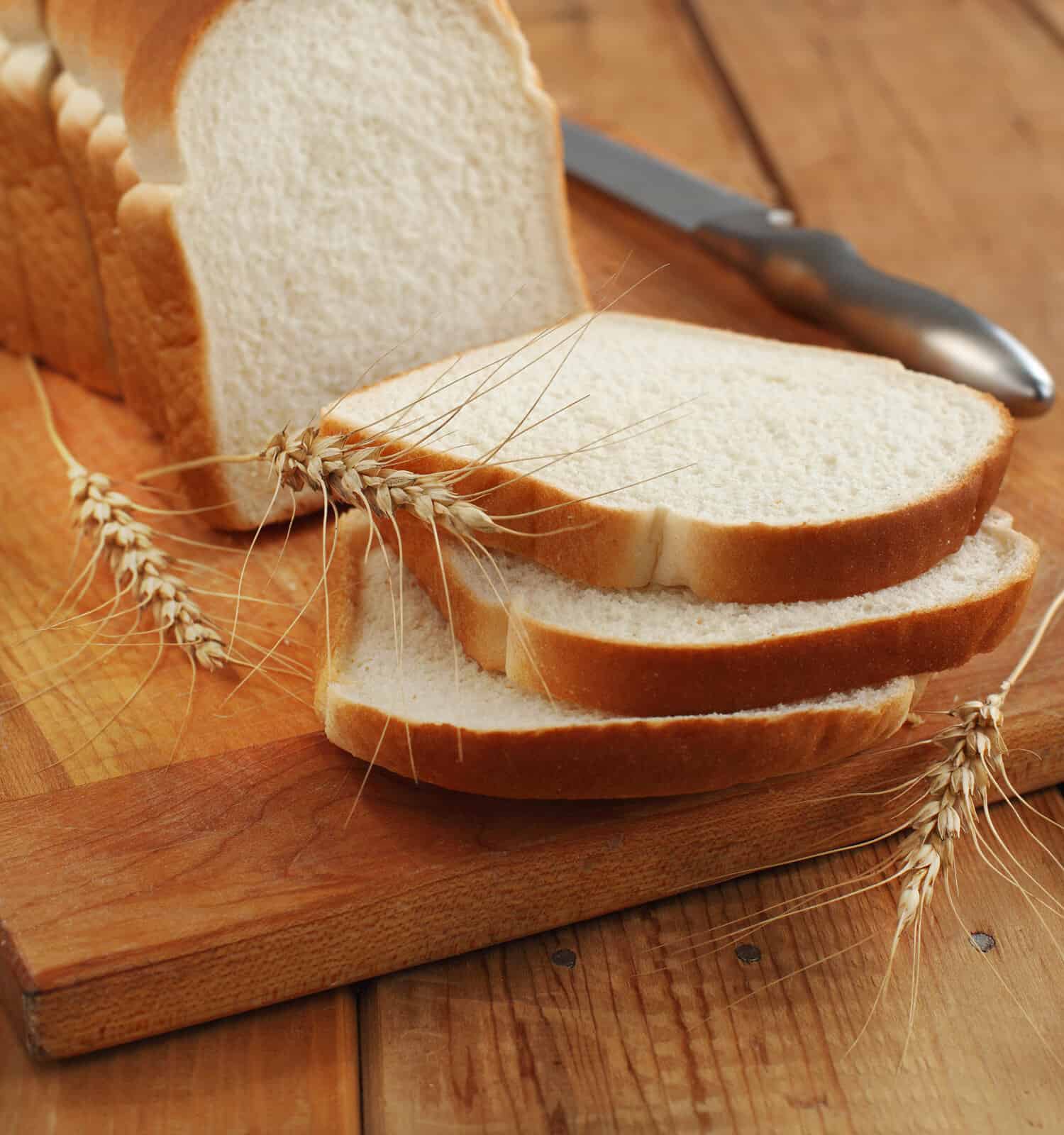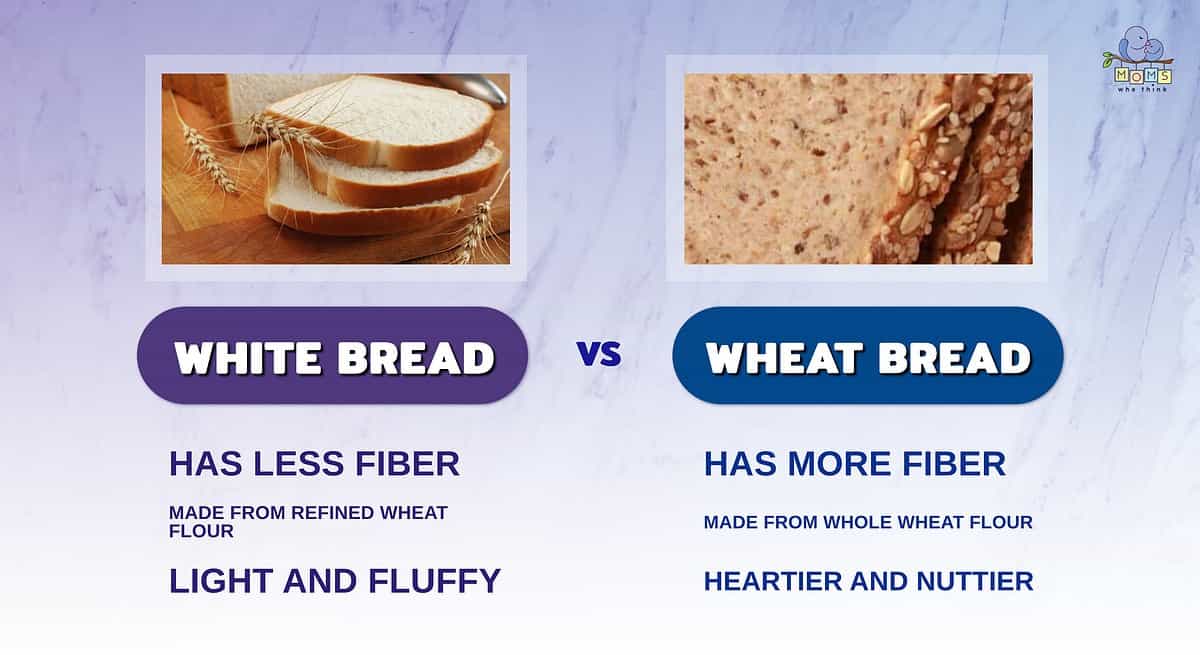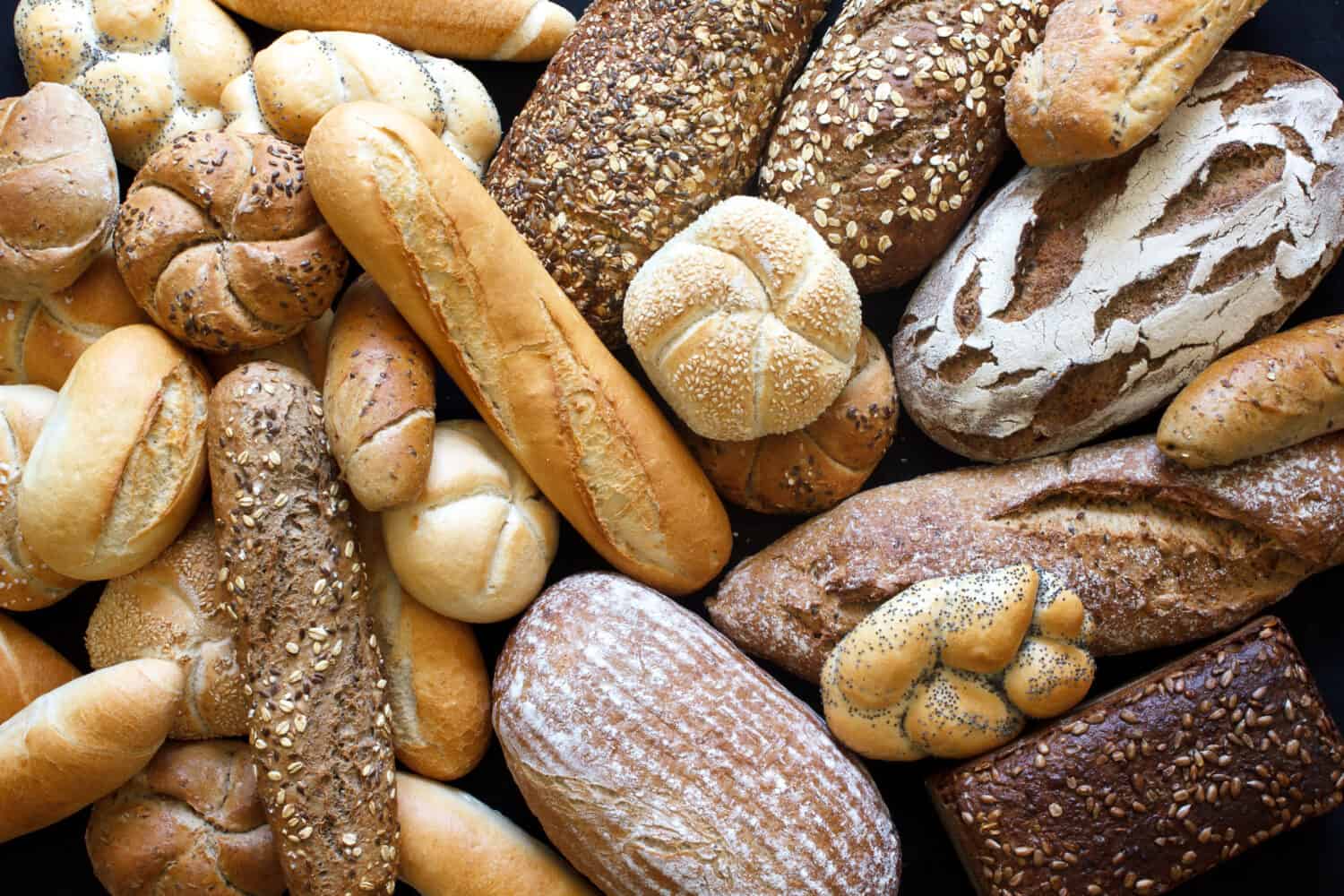The bread aisle options have exploded in the last decade. Add to that a trend toward confusing nutrition information, inconsistent use of health terms, and misleading marketing tactics, and it's almost impossible to discern fact from fiction on the grocery shelves. Both white bread and wheat bread make nutritional claims, and the difference between the varieties does sit firmly in the nutrition space. I'm here to shed light on those nutritional differences, address whether these breads are the same thing, discuss substitution options, and provide you with delicious alternatives and recipes for each.
Nutritional Differences: Which Bread is Healthier For You?
When it comes to nutrition in the world of bread, white bread and wheat bread stand at opposite ends of the spectrum. Their identifying monikers — white and wheat — come from the flour used to make the loaves. White Bread uses only refined white flour, with the germ and the bran of the grain removed. Manufacturers do this because those parts of the wheat grain hold more volatile oils that degrade faster than refined wheat. Wheat bread (no surprises here) is the full wheat grain, ground and processed in a way that includes the germ and bran. Wheat bread may, therefore, expire faster than a loaf of white bread, but there are alternate preservatives and stabilizers that go into industrial breads that will keep is fresh longer than, say, a bakery boule. Here's a breakdown of the key nutritional differences:
- Fiber Content: One of the main distinctions lies in the fiber content. Wheat bread, made from whole grains, retains the bran and germ, offering a significant amount of dietary fiber. On the other hand, white bread is made from refined grains, resulting in a significantly lower fiber content.
- Vitamins and Minerals: Whole wheat bread is a nutritional powerhouse, providing essential vitamins and minerals like vitamin E, B vitamins, iron, magnesium, and zinc. White bread, due to the refining process, loses a significant portion of these nutrients.
- Glycemic Index: The glycemic index (GI) measures how quickly a food raises blood sugar levels. Whole wheat bread has a lower GI than white bread, leading to a slower and more sustained release of energy.

Wheat bread is easily identified by its deeper color and darker crusts. It often has an enticing and nutty aroma.
©mama_mia/Shutterstock.com
Are White Bread and Wheat Bread the Same Thing?
White bread and wheat bread might look similar on the surface, but they are not the same thing. Here's why:
- Ingredients: White bread is typically made from refined wheat flour, which involves stripping away the bran and germ, leaving behind the starchy endosperm. Wheat bread, on the other hand, utilizes whole wheat flour, retaining all parts of the grain.
- Texture and Taste: White bread tends to be softer and lighter, with a milder flavor. Wheat bread, due to its whole grain nature, has a denser texture and a slightly nuttier taste.
Can They Be Substituted for Each Other?
While white bread and wheat bread have distinct flavors and textures, they can sometimes be substituted for each other, depending on the recipe and personal preferences. Consider these factors:
Flavor and Texture
White bread works well in recipes where a light and fluffy texture is desired, such as sandwiches or French toast. However, for dishes that benefit from a heartier texture and a nuttier flavor, whole wheat bread is the way to go (because some of the mass-produced white bread varieties just taste like chewy air).
Nutritional Value
If you're aiming for the option with better nutrient density, substituting white bread in favor of whole wheat bread is an excellent choice. Whole wheat bread adds fiber, vitamins, and minerals to your diet, making it a healthier alternative. Be mindful of ingredient lists, though.
Substitution Options for White Bread
If you're looking to reduce your white bread intake or explore different flavors, here are some delectable alternatives:
- Whole Grain Bread: Opt for bread labeled as “100% whole grain” or “whole wheat” to ensure you're getting the maximum nutritional benefits. And don't hesitate to experiment with different varieties like rye, oat, or spelt bread for added diversity.
- Artisanal Bread: This subcategorization is often what you'll find in the bakery case at the supermarket. They have a decidedly worldly perspective, which often incorporates ancient grains, seeds, and unique flavors from around the world. Sourdough bread, in particular, offers a tangy taste and a delightful chewiness.
- Homemade Bread: Unleash your inner baker and try making your own bread at home. This way, you have control over the ingredients, allowing you to customize your loaf with whole grains, seeds, or even herbs and spices. We love the King Arthur Flour recipe archive for bread recipes that work every time.

White bread is made with refined white flour, giving it an ethereal texture and an endlessly adaptable flavor profile. It's a pantry staple for a reason!
©AnjelikaGr/Shutterstock.com
Substitution Options for Wheat Bread
If you're seeking alternatives to wheat bread, here are some scrumptious options to consider:
- Multigrain Bread: Look for bread that contains a mix of various grains, such as oats, barley, flaxseeds, or quinoa. These breads offer a diverse range of flavors and textures.
- Gluten-Free Bread: For those with gluten sensitivities or celiac disease, gluten-free bread made from alternative flours like rice, almond, or buckwheat can be a suitable substitute.
- Lettuce Wraps or Collard Wraps: Get creative and swap bread entirely by using large lettuce leaves or collard greens as wraps. Fill them with your favorite sandwich fillings for a refreshing and low-carb option.
Best Recipes Using White Bread
- White bread is our pick for grilled cheese sandwiches (with tomato soup, of course). We love to mix white cheddar and yellow cheddar together for our grilled cheese and are picky about which canned tomatoes we use in our soup recipe.
- If you're looking for white bread options in the bakery case, make sure you're versed in French bread vs. Italian bread varieties. Both are fantastic but they bring different flavors and textures to the party.
- White bread toast and eggs is one of the most iconic American breakfasts. Change it up by swapping in quail or duck eggs for breakfast one day.
Best Recipes Using Wheat Bread
- When it comes to wheat bread, we tend to top or fill our sandwiches using proteins with stronger flavor profiles, like prosciutto or serrano ham.
- We also love the more complex flavors when we're using up leftovers, like making steak sandwiches from strip steak or ribeye.
- These 8 Classic Childhood Sandwiches are great with wheat bread, a healthy upgrade. (This Grilled Cheese with Roast Beef is especially amazing with wheat bread.)
- If you'd like to make a bread recipe using whole wheat flour, check this one out:
Country Brown Bread
- Total Time: 57 minutes
Ingredients
- 2 cups milk
- ½ cup white sugar
- ½ cup molasses
- 1½ cups whole wheat flour
- 1½ cups bread flour
- ½ teaspoon salt
- 1 teaspoon baking soda
- 3 teaspoons baking powder
Instructions
- Butter and flour two 9×5 inch bread pans. Preheat oven to 350°F (175°C).
- In a small bowl combine milk, sugar, and molasses.
- Mix together whole wheat flour, regular flour, salt, baking soda and baking powder.
- Add to milk mixture and mix well.
- Pour mixture into bread pans. Bake for 45 minutes.
- Prep Time: 12 minutes
- Cook Time: 45 minutes
Conclusion

- White bread is great for sandwiches due to its light and fluffy texture. Wheat bread is great for anyone looking for something hearty.
- Wheat bread is made from whole wheat flour, while white bread is made from refined wheat flour.
- Due to the nature of its production, white bread has less fiber than wheat bread.
The winner in the battle of white bread vs. wheat bread ultimately depends on your taste preferences and health goals. While white bread is arguably a classic pantry staple, whole wheat bread takes the nutritional crown and is growing in popularity. However, don't be afraid to explore the world of alternative bread options, as there's a whole universe of flavors waiting to be discovered. So go ahead, experiment with different bread varieties, and let your taste buds lead the way to wholesome and delicious meals. Remember, food is meant to be enjoyed, shared, and celebrated. Until next time, keep the ovens warm and the laughter abundant!
The image featured at the top of this post is ©Moving Moment/Shutterstock.com


